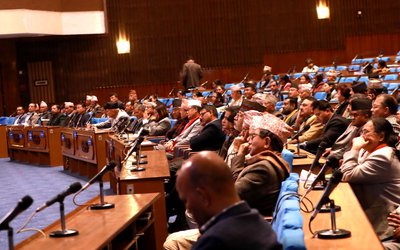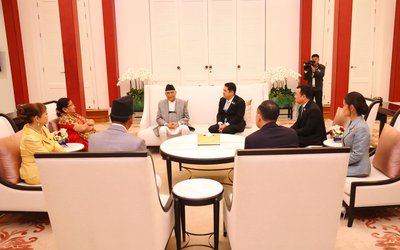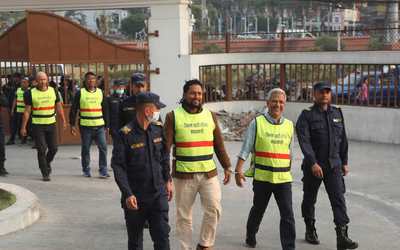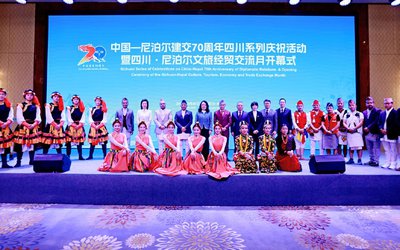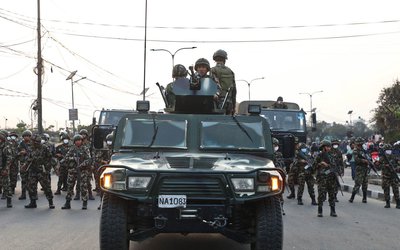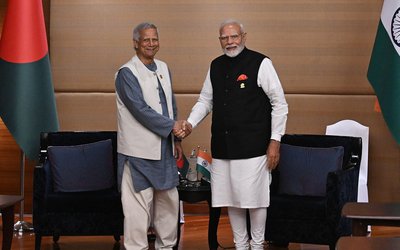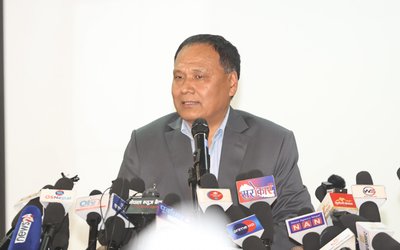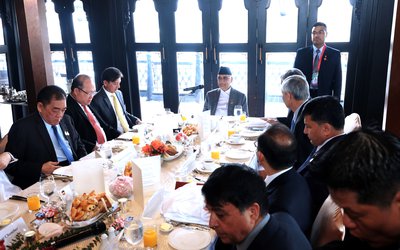
Nepal needs immediate help to rebuild livelihoods after last month’s devastating earthquake but in the longer term, the country must make sure it is more resilient to future disasters, said Bindu N. Lohani, Asian Development Bank (ADB) Vice-President for Knowledge Management and Sustainable Development.
“Immediate support is needed to help affected people get transitional shelters that can withstand the monsoon season, and farmers resume preparations for the rice sowing season that is to start within a few weeks,” he said at the Build Back Better Reconstruction Seminar for Nepal organized by the Government of Nepal and Japan International Cooperation Agency here today.
“But we need to ensure that the recovery process results in higher disaster resilience, both physically and institutionally,” he added.
The 7.8 magnitude earthquake that struck on 25 April and subsequent aftershocks and landslides killed over 8,600 people and damaged hundreds of thousands of homes and buildings. They also destroyed food stocks, livestock and swept away farmland. Weakness in the agriculture, industry, and services sectors could push Nepal’s economic growth down to 3.8% this fiscal year and potentially lower if supply disruptions continue.
Lohani shared experiences and lessons learned from ADB’s involvement in several disaster-related reconstruction efforts including in response to earthquakes in India and Pakistan, the 2004 Asian tsunami and, most recently, Typhoon Yolanda which hit the Philippines in 2013.
Given Nepal is highly vulnerable to natural hazards and extreme climate events are already costing the country around 1.5%-2.0% of gross domestic product every year, the country must build back better, Mr. Lohani said.
This means that planning must consider the entire area affected by the earthquake. Sites where new infrastructure will be relocated need to be properly selected. Hazard-resilient building designs must be used, building codes must be fully applied and, where needed, building by-laws must be strengthened and better enforced.
Noting the positive efforts the government has made in recent years, the Vice-President said there was nevertheless an opportunity to strengthen the country’s institutional set up for disaster risk management. ADB would, he said, apply a “flexible approach” to help meet Nepal’s rapidly evolving needs.
ADB has already handed over a $3 million grant from the Asia-Pacific Disaster Response Fund for immediate relief efforts in Nepal and will provide up to $200 million more for the first phase of rehabilitation. It has also expanded by $40 million the financing available through its Trade Finance Program to help Nepal’s banks finance imports for reconstruction.
Nepal needs immediate help to rebuild livelihoods but in the longer term the country must make sure it is more resilient to future disasters. A family beside a damaged house near Naglebhare, Nepal.
- IME GROUP: Expands Into Paper Industry
- Mar 24, 2025
- CPN UML: Instigated By India
- Mar 23, 2025
- ADB’S CHIEF ECONOMIST: Nepal Reduces Poverty
- Mar 11, 2025
- FM DR. DEUBA: A Successful Visit
- Mar 11, 2025
- MD GHISING: Target Of Personal Grudge
- Mar 09, 2025
